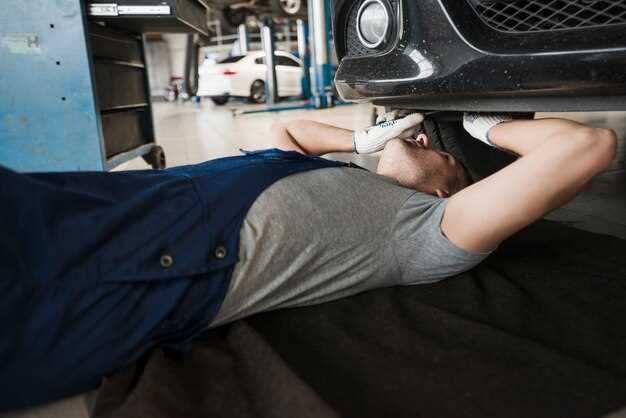
The performance of diesel engines is significantly influenced by the efficiency of the turbocharger, which is designed to enhance engine power by forcing more air into the combustion chamber. However, one persistent challenge that many diesel engine enthusiasts and technicians face is turbo lag. This phenomenon occurs during acceleration when there is a delay between the driver’s input and the response of the engine, primarily due to the time it takes for the turbo to spool up and provide the desired boost.
Understanding how to effectively manage turbo lag is crucial for optimizing engine performance. By implementing strategies that control the factors contributing to lag, such as exhaust flow and boost pressure management, drivers can experience more responsive acceleration and smoother power delivery. This not only enhances driving experience but also improves overall engine efficiency, allowing diesel vehicles to perform at their best.
In this article, we will explore various techniques and technologies that can be employed to mitigate turbo lag. From advanced tuning solutions to modifications in the exhaust system, we will discuss how these adjustments can lead to improved throttle response and enhanced performance in diesel engines. Armed with the right knowledge, drivers can take full advantage of their turbocharged diesel engines, enjoying increased power and performance without the frustrating delays.
Understanding Turbo Lag: Causes and Effects in Diesel Engines

Turbo lag refers to the delay between the driver pressing the accelerator and the moment when the turbocharger builds sufficient boost to enhance engine power effectively. In diesel engines, turbo lag can significantly affect performance, especially during acceleration or when overtaking.
One of the primary causes of turbo lag is the time it takes for the turbocharger to spool up. When the driver accelerates, exhaust gases are needed to spin the turbine within the turbo. Initially, there may not be enough exhaust flow to achieve immediate boost, leading to a noticeable delay in power delivery. This phenomenon is particularly prevalent in diesel engines due to their relatively lower engine speeds and higher inertia compared to gasoline engines.
The effects of turbo lag can range from a momentary feeling of sluggishness to a more pronounced impact on drivability. This delay can be frustrating for drivers, particularly in situations that require quick throttle response. The perception of turbo lag may also lead to inconsistent performance, as the engine may not respond as expected under varying load conditions.
To mitigate turbo lag, modern diesel engines are increasingly equipped with technologies such as twin-scroll turbos, variable geometry turbochargers (VGT), and sophisticated engine management systems. These innovations aim to optimize the timing and efficiency of the turbocharger’s response, ensuring that drivers experience a more immediate power delivery. Proper tuning and maintenance can also play a significant role in reducing the effects of turbo lag, enabling a more enjoyable driving experience.
Boost Control Strategies for Minimizing Turbo Lag

Turbo lag represents the delay between when the driver presses the accelerator pedal and when the turbocharger provides the desired boost. This phenomenon can significantly affect the performance and drivability of diesel engines. Implementing effective boost control strategies is essential for minimizing this lag and enhancing overall engine responsiveness.
1. Electronic Wastegate Control: Modern diesel engines often integrate electronic wastegate actuators, which provide precise control over the turbocharger’s boost pressure. By rapidly adjusting the wastegate position, these systems can reduce lag by ensuring optimal boost levels are achieved promptly. This adaptability allows for more immediate throttle response in various driving conditions.
2. Variable Geometry Turbochargers (VGT): VGTs feature adjustable vanes that alter the flow of exhaust gases to the turbine. By optimizing the angle of these vanes, VGTs enhance boost pressure at lower RPMs, effectively minimizing lag. This technology maintains efficiency across a broader range of engine speeds, allowing for quicker acceleration and improved performance.
3. Boost Threshold Management: Establishing a target boost threshold helps manage turbo lag. By tuning the engine control unit (ECU) to reach target boost levels faster, drivers experience improved responsiveness. Implementing surge protection and throttle mapping can also aid in achieving smooth transitions during acceleration, reducing the perception of lag.
4. Anti-Lag Systems (ALS): Frequently used in motorsports, anti-lag systems work by maintaining turbo spin even when the throttle is closed. These systems achieve this by injecting fuel into the exhaust manifold, creating combustion that keeps the turbocharger active. While beneficial for performance, it’s important to note that ALS can increase engine wear and require careful tuning for street applications.
5. Turbocharger Sizing: The size of the turbocharger can significantly impact lag. A smaller turbo may spool up quicker, but it could limit high-end performance. Conversely, a larger turbo typically offers better high-end power but may introduce more lag. Careful consideration of turbo sizing tailored to specific performance goals can effectively minimize lag while maximizing engine output.
Implementing these boost control strategies allows for a more responsive diesel engine, ultimately enhancing driver experience. By addressing turbo lag, performance enthusiasts can enjoy improved acceleration and overall engine efficiency.
Tuning and Upgrading Components to Enhance Turbo Response
To maximize turbo response in diesel engines, tuning and upgrading specific components is essential. Enhancing these elements can significantly reduce turbo lag and improve overall engine performance. One of the primary focuses should be on the turbocharger itself. Upgrading to a larger or more efficient turbo can provide increased boost pressure, allowing for quicker spool-up times and enhancing throttle response.
Another critical component to consider is the intercooler. Upgrading to a high-performance intercooler can improve air density and lower intake temperatures, resulting in better combustion efficiency. This, in turn, enables the engine to respond more swiftly to throttle input, delivering a more immediate boost from the turbocharger.
Additionally, optimizing the exhaust system is crucial. A less restrictive exhaust system with a high-flow turbine can facilitate quicker turbo spooling by allowing exhaust gases to exit the engine more efficiently. This improvement not only enhances the turbo’s performance but also reduces back pressure, contributing to better overall engine dynamics.
Moreover, tuning the engine management system is vital for effective control of the turbocharger’s operation. Advanced tuning solutions can adjust parameters such as fuel delivery and timing, ensuring that the engine supports the desired boost levels while maximizing response time. Utilizing a remap or aftermarket ECU can optimize how power is delivered across the engine’s RPM range.
Lastly, investing in a high-quality wastegate system is beneficial for better turbo control. An upgraded wastegate can ensure that boost pressure is regulated accurately, preventing unwanted spikes that could hinder turbo performance. By maintaining consistent boost levels, engines can achieve a more predictable and responsive driving experience.




